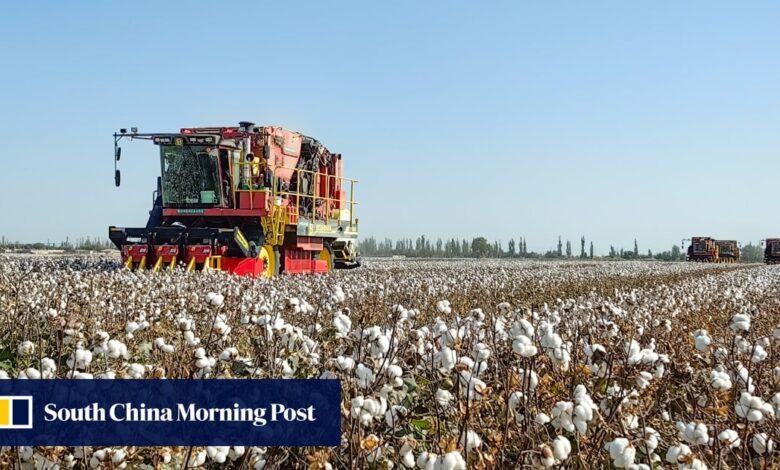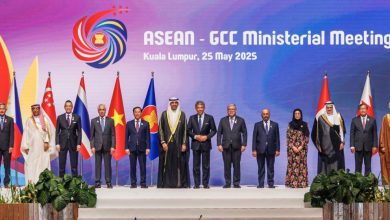Scientists say Western sanctions against China ‘toothless’ without better supply chain data

[ad_1]
But “without better supply chain transparency, these acts will remain rather toothless,” said lead author Anton Pichler, a postdoctoral fellow at the Vienna-based research organisation Complexity Science Hub.
More than 300 million firms are connected through an estimated 13 billion supply links in the global economy, according to the team, which includes researchers from Complexity Science Hub, Vienna University of Economics and Business, University of Cambridge, University of Oxford, Universite Libre de Bruxelles, Statistics Netherlands and Arizona State University.
US law banning Xinjiang imports has glaring weaknesses, lawmakers are told
US law banning Xinjiang imports has glaring weaknesses, lawmakers are told
The US Uygur Forced Labor Prevention Act took effect last year to block the import of all goods sourced wholly or partly from Xinjiang in far western China.
The EU directive, once finalised, would require European companies to identify, prevent and mitigate adverse human rights and environmental effects in their supply chains.
However, Pichler said it was difficult for US and European firms to know where production inputs come from, “which makes it similarly difficult to assess whether human rights violations have played a role in producing and shipping these inputs”.
“This makes the enforcement of these acts very difficult as long as there is no better transparency on supply chain relationships.”
He said a map of global supply networks would help identify particularly vulnerable supply relationships, and policymakers could create incentives for companies to diversify their suppliers.
According to the researchers, the lack of tools to analyse the global economy at the firm level has left the world ill-prepared to deal with crisis moments such as the shortages in raw materials and key medical supplies that occurred during the pandemic.
Other applications of a global supply chain map could include monitoring green transitions, reducing tax evasion and corruption, improving human rights through transparency and ensuring global security of food and medication, according to the paper.
Why is China’s manufacturing sector increasingly drawn to Vietnam?
Why is China’s manufacturing sector increasingly drawn to Vietnam?
China, the world’s second-largest economy, has been the world’s factory for over four decades. But that is starting to change.
Mexico replaced China this year as the top trading partner of the US – a result of strained US-China relations as well as the disruption of global supply chains caused by Beijing’s strict pandemic controls.
On Thursday, Google announced that it would start manufacturing its Pixel smartphones in India. The company expects the first batch to hit the market next year.
Smaller manufacturers in industries such as footwear, clothing and toys have turned to Southeast Asia to reduce their reliance on China.
Building a global data sharing system would require international efforts and coordination by organisations such as the United Nations, the International Monetary Fund, the World Bank and the Organisation for Economic Cooperation and Development, according to the paper.
“Since supply chain information is sensitive data, it is rather unlikely that countries with strained economic and political relationships will share this data with each other,” Pichler said.
He said one incentive to share data would be to enforce tax compliance. Firm-level data on trade across borders would also make it easier to detect fraud.
While he expects more countries will use the data to analyse their economies, sharing it would “require a common understanding and agreement of how to use this data”.
“We have been talking to various stakeholders at international organisations but so far, there is no general effort by these organisations to collect this data, which would vastly improve our understanding of the global economy.”
[ad_2]
Source link






